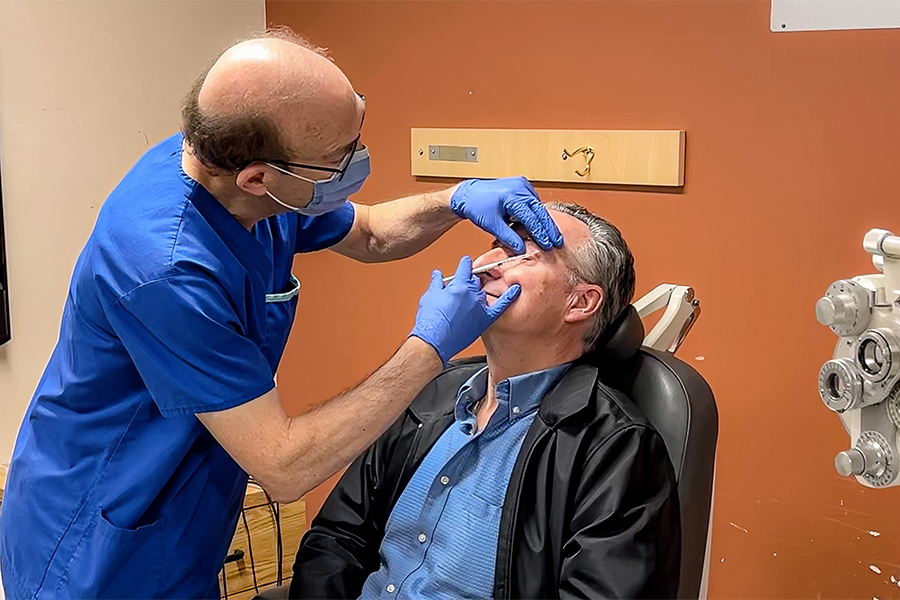Dr. Michael Reber operates a specialized 3D printer that can make tiny silk fibres. Photo: Tim Fraser.
Eye diseases such as glaucoma can starve optic neurons of nutrients, causing them to die. Once that happens, the neurons, also known as retinal ganglion cells, stop building pathways with other neurons and the eye stops relaying messages to the brain. Once a critical number of these neurons is lost, vision loss sets in.
But what if there was a way to keep those neurons from degenerating? Dr. Michael Reber has built a nutrient-filled scaffolding of sorts for the eyes, using silk. The silk is reprocessed and then made into tiny fibres printed on a 3D printer.
“We take the silk filaments, we dissolve them and then from that we reprocess them as fibres,” says Dr. Reber. “When we engineer these fibres, we add the molecules the neurons need to survive and grow.”
The idea is that when the fibres are surgically implanted in the eye, “the neurons will climb on the fibres and chew on the nutrients,” he says. Providing the neurons with both support and food will allow them to build new neural pathways and may allow patients to restore their vision.
The approach will require transplants into preclinical models before it can be tested on people, Dr. Reber says. But he is excited at the prospect of successfully treating diseases that lead to blindness. “Every day, we know a little bit more. It’s giving us hope.”
This article originally appeared in the magazine Vision: A look inside the Donald K. Johnson Eye Institute.


